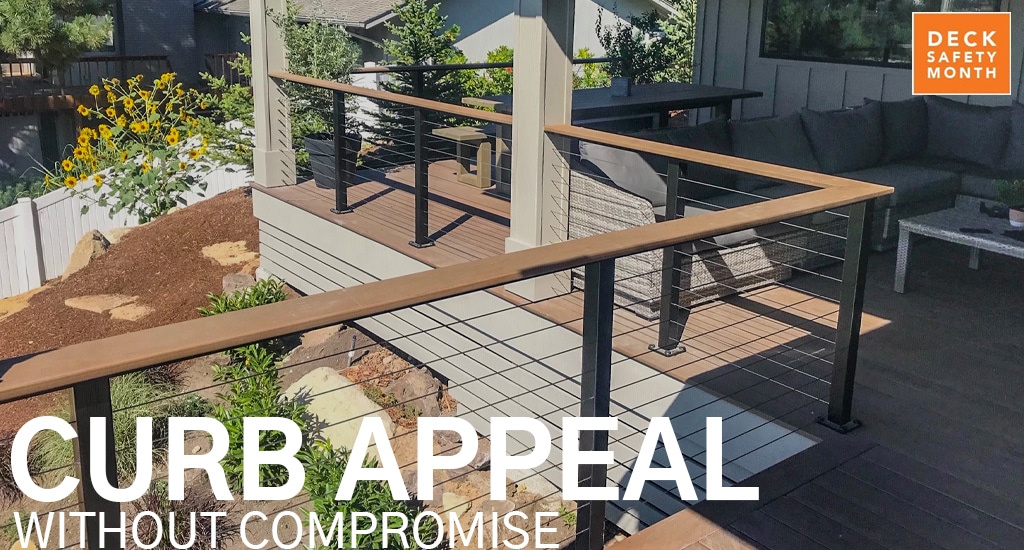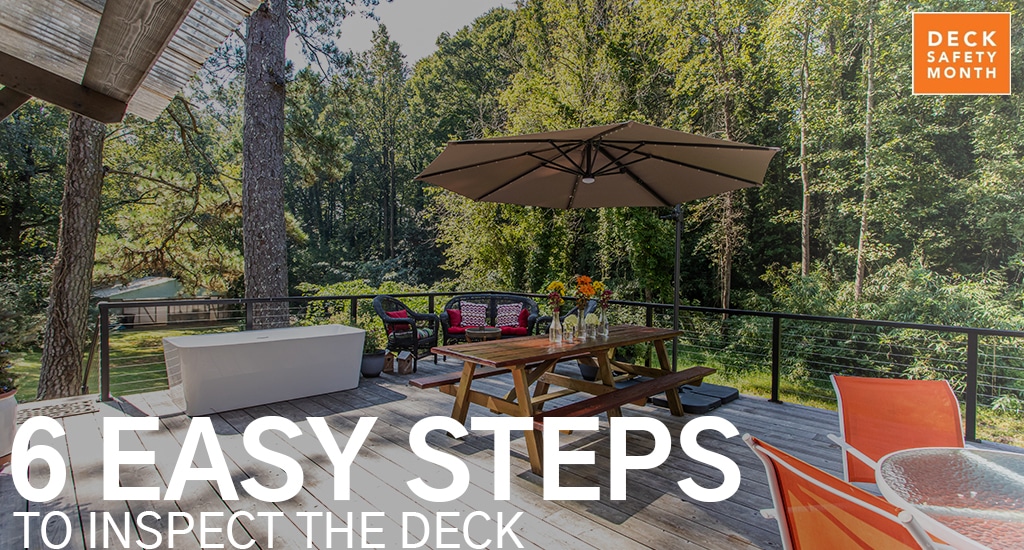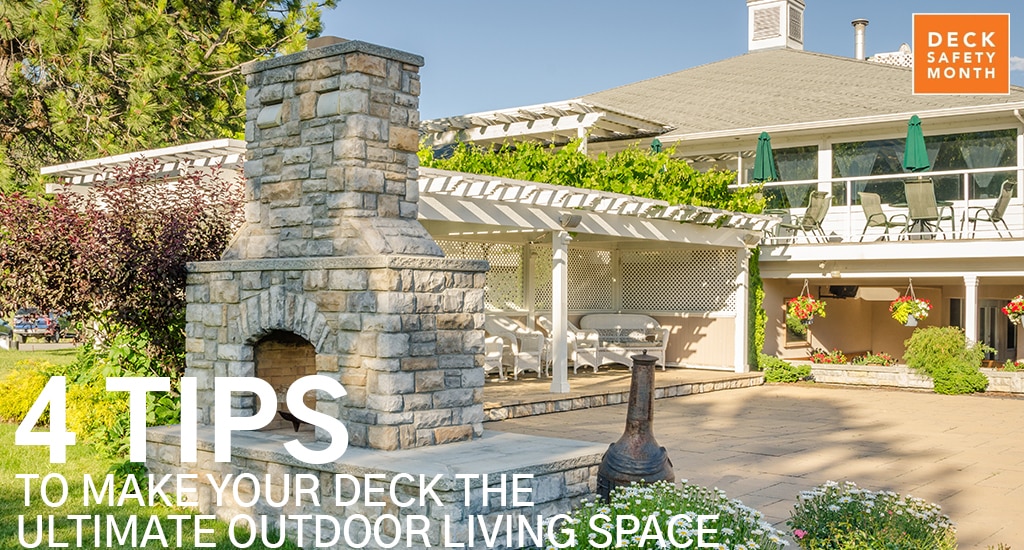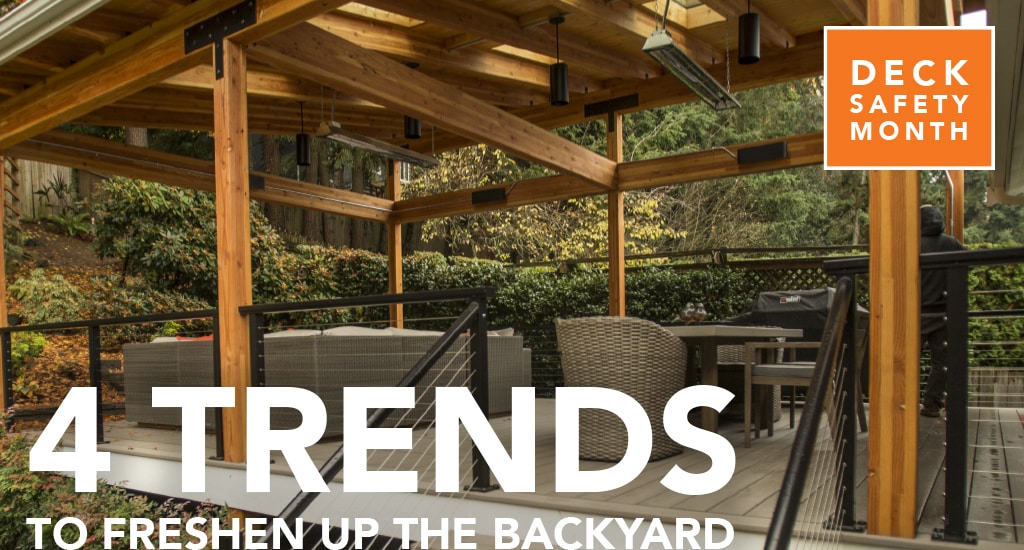The Latest IRC Building Code Changes from RailFX
With summer almost here, it’s a good time to share the latest information about building code changes. While many of you may still be using the 2018 International Residential Code (IRC), the 2021 IRC, published in October 2020, could be adopted in your area before you know it. There are changes to the 2021 IRC that impact the deck design of guardrails and handrails.
To keep you on the cutting edge — especially on the heels of Deck Safety Month — here’s an overview of changes that may affect your future deck designs.
New Rail Specs Depend on Function
Historically, guardrails and handrails had the same specification requirements within the building codes, even though they perform very different functions:
- Typically installed alongside stairs and ramps, handrails must provide resistance in all directions, for people going up and down the stairway.
- Generally located along the outer edges of the decks and elevated surfaces, guardrails (also referred to as guards in the IRC) are designed to keep people from falling off decks and, therefore, only need to provide critical support in one direction.
Previous versions of the IRC, 2018 included, stated both guardrails and handrails were subject to the same 200-lb concentrated load per square foot (psf) in any direction requirement.
The new 2021 IRC clarifies the design intent of both types of rails, accounting for real-world usage of rails to determine loading requirements.
Previous versions of the IRC, 2018 included, stated both guardrails and handrails were subject to the same 200-lb concentrated load per square foot (psf) in any direction requirement.
The new 2021 IRC clarifies the design intent of both types of rails, accounting for real-world usage of rails to determine loading requirements.
Table R301.5, Minimum Uniformly Distributed Live Loads in the second version in the 2021 IRC, dated November 2021, states both guardrails and handrails must support a concentrated load of 200 psf. This load requirement has been carried over from previous versions of the IRC.
The update for 2021 IRC is to clarify “Where the top of a guard system is not required to serve as a handrail, the single concentrated load shall be applied at any point along the top, in the vertical downward direction and in the horizontal direction away from the walking surface. Where the top of a guard is also serving as the handrail, a single concentrated load shall be applied in any direction at any point along the top. Concentrated loads shall not be applied concurrently.”
New 2021 IRC code changes help clarify the direction of loading for Guardrails. RailFX systems were already engineered to previous code revisions and are approved to handle loading in all directions.
New Requirements for Attachment of Exterior Guardrails
2021 IRC updates also include extra safety guidelines to ensure proper Guardrail attachments to wood-framed decks.
The 2021 IRC has a new section, R507.10, which details requirements regarding how the guardrails are attached to wood-framed decks. When guards are supported on the deck framing itself, IRC 2021 says “guard loads shall be transferred to the deck framing with a continuous load path to the deck joists.” And when guardrails are supported at the side of a deck joist or beam, the joist or beam must be connected to the adjacent joists to prevent rotation of the joist or beam. The code also goes on to say that “Connections relying only on fasteners in end grain withdrawal are not permitted.”
These new requirements do not dictate the exact connection methods but rather address the larger issue of how the guardrails are connected to the deck frame. You can continue to use standard blocking and fasteners. Our professional engineer (P.E.) approved RailFX system has guidelines for blocking and fasteners to ensure IRC code compliance and will continue to be updated as future IRC revisions materialize.
No Notched 4x4 Guard Posts at the Connection Point
New Section R507.10 also contains an important change regarding notched wood posts at deck guards.
Historically, building codes allowed notched 4×4 guard posts to be attached to the beam or the rim joist. It is now disallowed with the 2021 code update. 2021 IRC prohibits notching at the connection point when the post supports loads from the top and requires that the connection extends into the framing. Note that this change only impacts notching at the connection to the supporting structure.
We expect that this addition will help reduce accidents caused by guards that failed because of the notching.
Safety First
At RailFX, we’re always building better ways to support you. Keeping you aware of building code changes is another way you can lean on us.
For more deck safety resources year-round, visit our Deck Safety page on our website, or each out to us via email.











